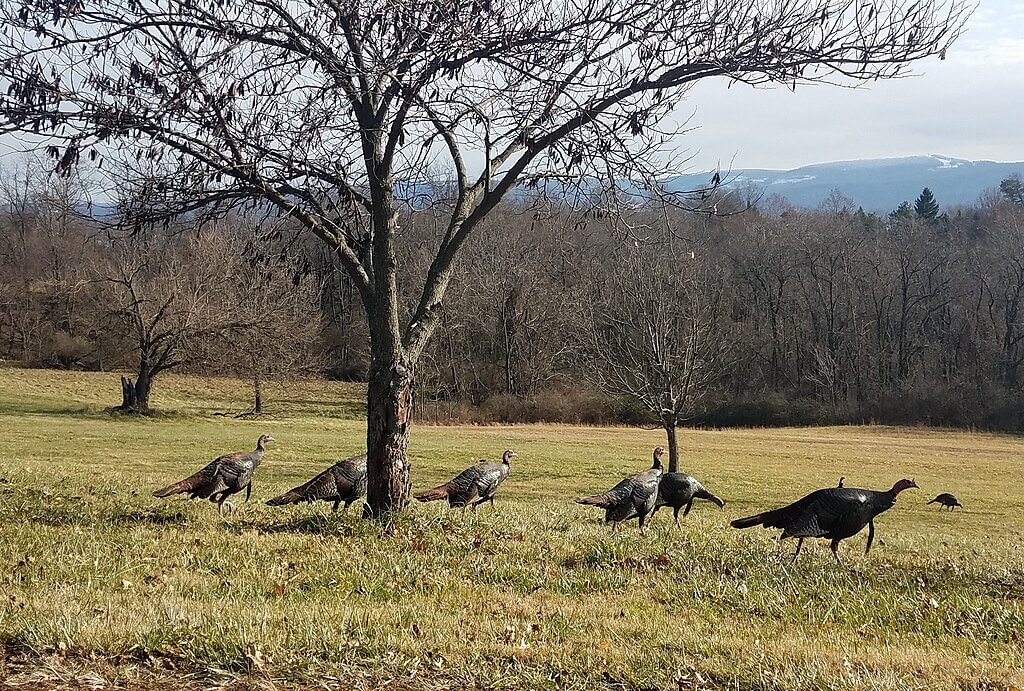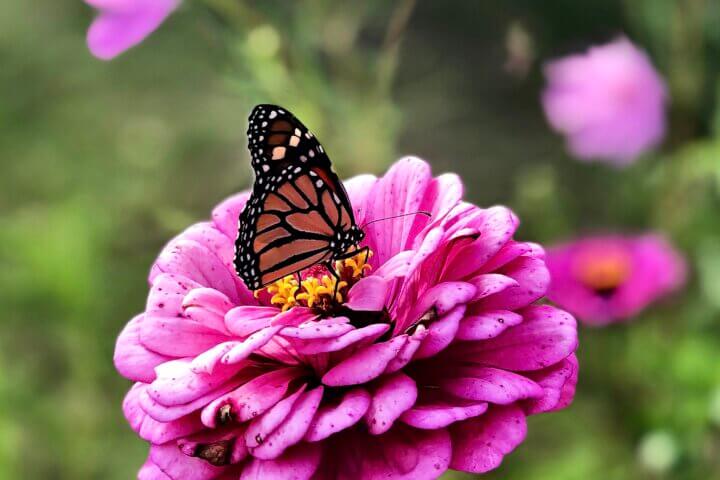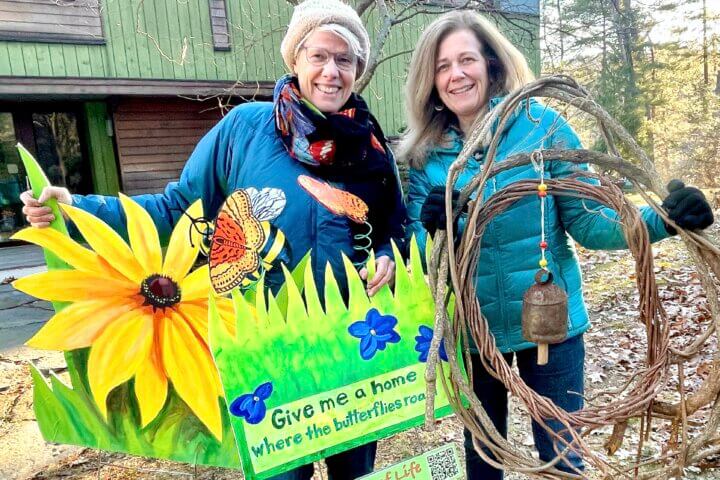By Wilson Kerr
Last week, most of us had turkey for Thanksgiving dinner. Now considered the centerpiece of a traditional meal commemorating the first successful harvest by English settlers in Plymouth, about 46 million domestic turkeys are baked, smoked, and even fried annually.
The first feast in 1621 was a three-day affair, with venison and “fowl” served. A 1621 diary entry by William Winslow describes that first autumn celebration.
“Our harvest being gotten in, our governor sent four men on fowling, that so we might after a special manner rejoice together after we had gathered the fruit of our labors. They four in one day killed as much fowl as … served the company almost a week’’.
While there is no specific mention of it, wild turkeys were plentiful then, so it stands to reason that this might have been on the menu.
Unlike the white-feathered, tame and over-fed domestic birds raised for sale at the grocery store, wild turkeys are impressive game birds with four subspecies in the U.S., including the Eastern Wild Turkey we have here in New England.
Males are called toms or “gobblers” and have vibrant, iridescent copper, bronze, red, green, and gold hues in their feathers. The toms strut and drum in the spring, to attract females (hens), flexing out their feathers to create an impression of size. Baby turkeys are called “poults,” and the hens make nests on the forest floor each spring.
They eat a variety of plant material and “mast” (think acorns), but about 20% of their diet is insects, including ticks, which they love. And wild turkeys are HUGE, coming in at up to 25 pounds, making them the second-largest native bird in North America. (Can you guess the first?)
But wild turkeys have another story to tell. It is one of survival and second chances and lessons we can learn about trees, and the impacts of industry and greed.
For eons, Native Americans lived and hunted here in forests populated by true old-growth giants. Massive white pine, spruce and birch and stands of 100-foot chestnut trees in their billions, with trunks 13 feet thick. So prolific that their spring blossoms could be smelled hundreds of miles out to sea. Birch trees so big their bark was shaped into canoes. Imagine.
Tragically, within about 200 years of European settlement, most of New England was entirely cleared of its ancient trees. In fact, New England was logged so intensively that it was 70% to 80% denuded by 1880. The ancient giants were felled and sold in an unregulated frenzy of axes and sawmills that is almost beyond comprehension — gone in the geologic blink of an eye.
The loss of our eastern forests was bad news for most animals, but especially wild turkeys. As ground-dwelling birds, they need tall “roost trees” to evade predators at night. This, along with relentless, year-round hunting, drove them nearly to extinction, and the last wild turkey was killed in Massachusetts in 1851.
Luckily, as other sources of fuel took hold and conservation measures were enacted, our eastern forests have come back almost as rapidly as they were cut down. While mostly second growth, the reforesting of New England is a success story with global-scale environmental impact.
Today, our “comeback” forests store enough carbon to offset 14% to 20% of the pollution produced in the six New England states and, according to a 2022 Harvard study, “they remove over 760,000 tons of air pollution annually, worth approximately $550 million in health benefits.” Massachusetts now has over three million treed acres.
As the forests returned, 36 wild eastern turkeys were trapped elsewhere and re-introduced to our state in the 1970s. They rebounded fast and today about 30,000 call the Bay State home — made our official game bird in 1991. While certainly well-below historic numbers, they are thriving, connected once again to the forest they depend on.
To me, it’s important to remember how close wild turkeys were to being gone forever and why — a grim reminder of the impact we had on this land in such a short time. On the positive side, the return of our forests should be celebrated, along with the return of the same native wild turkeys hunted by the Wampanoag and the pilgrims in 1621, and likely eaten at their first feast together.
Until next month, spend some Time Outdoors and perhaps see the trees in a thankful new way, as part of a success story — a carbon-sequestering regrown forest once again home to the wild turkeys that, like us, depend on it for their survival.
Oh … our largest native bird? The trumpeter swan.
Wilson Kerr lives in Concord and is an avid outdoorsman and amateur naturalist. This monthly column is written to help grow awareness of the wonders of nature. In this increasingly fast-paced and technology-packed world, it is important to stop and take in the beauty of our area and the animals that inhabit it. The author hopes this column will be read by families and used as a teaching tool and that you will spend more… Time Outdoors.





